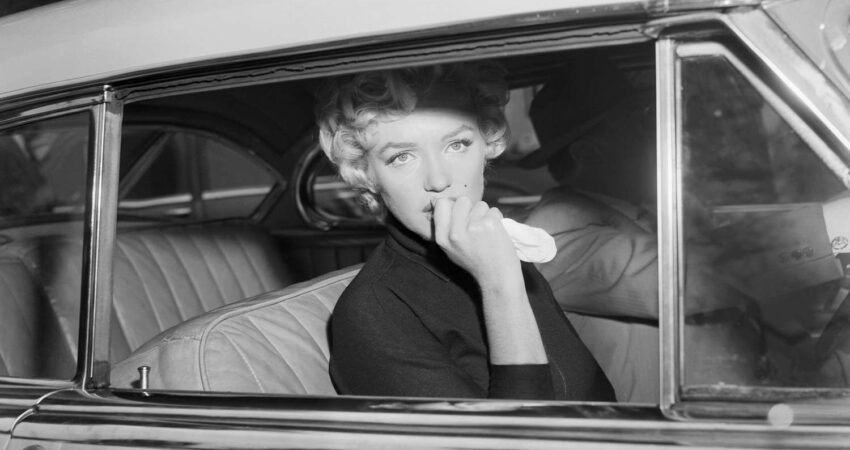Marilyn Monroe’s Mysterious Death: Unraveling the Enigma
The enigmatic beauty of Marilyn Monroe has entranced the public for generations with her iconic blonde hair and revered hourglass figure.
Recently, the release of Netflix’s film, “Blonde,” which offers a fictionalized account of Marilyn’s life, has reignited curiosity about the star, particularly surrounding the circumstances of her untimely demise.
Despite possessing fame, fortune, and allure, the sudden passing of the 1950s superstar at just 36 years old left the world in shock, prompting questions about the tragic fate of Marilyn Monroe.
In addition to cinematic portrayals, such as Ana de Armas’ depiction of Marilyn, a Netflix documentary titled “The Mystery of Marilyn Monroe: The Unheard Tapes” sheds light on the details surrounding her death.
Despite her public persona, Marilyn led a largely private existence.
So, how did Marilyn Monroe meet her end?
Here’s what we understand so far.
In the early hours of August 5, 1962, Marilyn was discovered lifeless in her modest Los Angeles residence due to an apparent overdose of sleeping pills, as reported by the Los Angeles Times.
Accounts from The New York Times reveal that Marilyn had retired to her bedroom around 8 p.m. the prior evening and was found unclothed, lying facedown on her bed, gripping a telephone receiver when a psychiatrist forced entry into her room at 3:30 a.m.
It was estimated that she had passed away six to eight hours before being found.
Eunice Murray, Marilyn’s housekeeper, expressed concern when Marilyn failed to respond to her knocks on the bedroom door.
Despite observing a light in Marilyn’s room at 3:25 a.m., the door remained locked.
Murray contacted Marilyn’s psychiatrist, Ralph Greenson, who broke a window to access the room and discovered Marilyn lifeless, holding a phone.
Another physician was summoned, and although Marilyn was declared deceased, law enforcement was only alerted at 4:20 a.m., approximately an hour after Murray’s initial call to Greenson.
Marilyn left no written explanations, as detailed by the Times.
The official verdict attributes Marilyn’s demise to an overdose.
An autopsy disclosed that Marilyn succumbed to acute combined drug toxicity involving chloral hydrate and Nembutal, tranquilizers discovered near her bedside.
Despite the absence of a water glass in her room, essential for ingesting the pills, and the lack of pill remnants in her stomach, forensic pathologist Cyril Wecht proposed the possibility of injection with the drugs, as suggested to People magazine.
Moreover, Marilyn’s mental health struggles preceding her death are well-documented.
Dr. Marianne Kris encouraged Marilyn to seek treatment at the Payne Whitney Psychiatric Clinic in 1961, a year before her fatal overdose.
Dissatisfied with her experience at the clinic, Marilyn departed three days later upon John DiMaggio’s arrival to retrieve her, indicating her disdain for the confinement, according to The New York Times.
Subsequently, DiMaggio relocated her to another facility for alcohol and substance abuse therapy, as per StyleCaster.
Recounting Marilyn’s final days, her therapist, Dr. Greenson, recollects her expressions of despair during the summer preceding her death.
Vanity Fair reported Dr. Greenson’s recollections of Marilyn feeling worthless, unattractive, and manipulated, painting a poignant picture of her emotional turmoil.
Close acquaintances of Marilyn were incredulous upon learning of her demise.
Reports in The Los Angeles Times feature statements from friends refuting the notion of intentional self-harm, with assertions that Marilyn was in prime physical condition and high spirits, scheduled for future engagements.
Recent revelations unveiled in the documentary cast doubt on the circumstances surrounding Marilyn’s passing, suggesting that discrepancies exist regarding the timing and location of her death, as well as potential individuals present during the event.
Speculation regarding the involvement of Robert F. Kennedy, romantically linked to Marilyn and allegedly in contact with her days leading up to her demise, adds layers of complexity to the narrative.
The documentary hints at a cover-up surrounding Marilyn’s death, implicating powerful figures in potential obfuscation of the truth.



